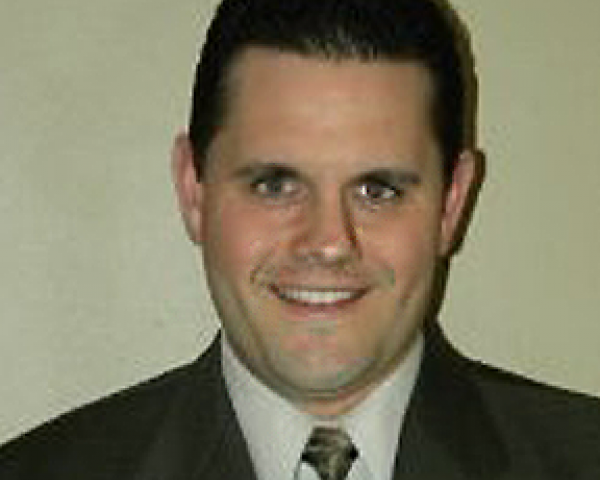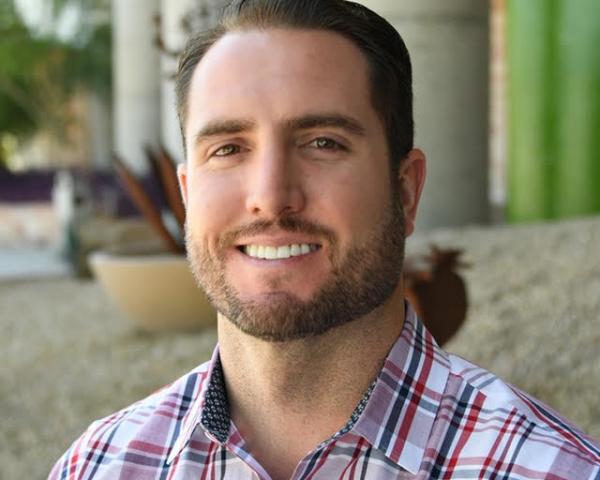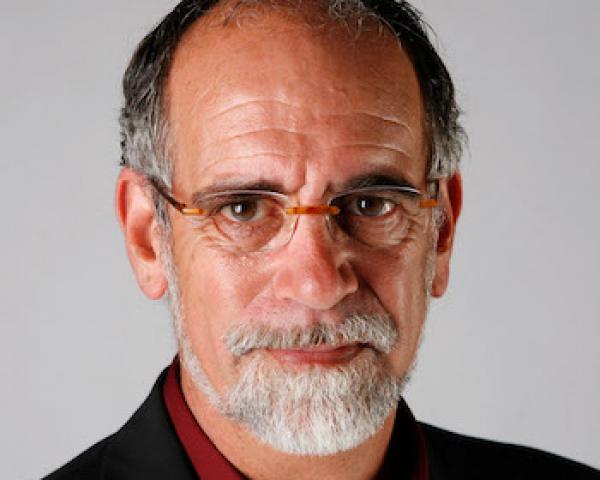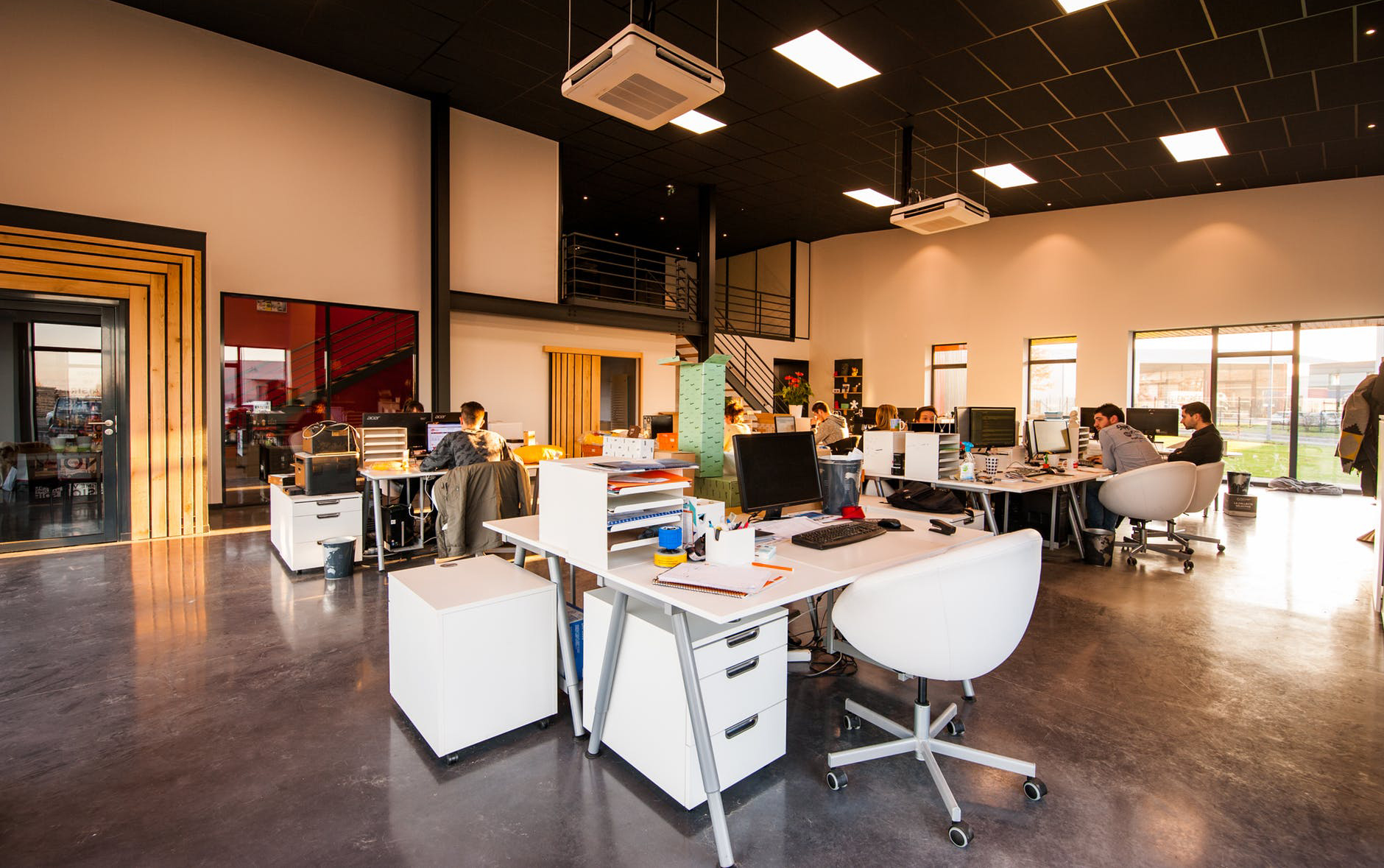Did you catch that headline a few weeks back?
An official of a health system in North Carolina sent an email to the entire board of the North Carolina State Health Plan calling them a bunch of “sorry SOBs” who would “burn in hell” after they “bankrupt every hospital in the state.”
Wow. He sounds rather upset. He sounds angry and afraid. He sounds surprised, gobsmacked, face-palming.
Bless his heart. I get it, I really do. Well, I get the fear and pain. Here’s what I don’t get: the surprise, the tone of, “This came out of nowhere! Why didn’t anyone tell us this was coming?”
Brother, we did. We have been. As loudly as we can. For years.
Two things to notice here:
- What is he so upset about? Under state Treasurer Dale Folwell’s leadership, the State Health Plan has pegged its payments to hospitals and other medical providers in the state to a range of roughly 200% of Medicare payments (with special help for rural hospitals and other exceptions). In an industry that routinely says that Medicare covers 90% of costs, the payments actually sound rather generous.
- What is the State Health Plan? It’s not a payer, that is, an insurer. It’s a buyer. Buyers play under a different set of rules and incentives than an insurer.
Payers Are Not Buyers
That #2 is key: Insurers are paying for your healthcare with your money, the premiums you pay them. Under the Affordable Care Act, their entire administrative cost, executive salaries and the profit for shareholders comes out of a strictly limited percentage of the total cost. Think about that. The higher the total cost of the healthcare they buy for you, the more money to go around for executive salaries and shareholder profit. The more your healthcare costs, the better their bottom line looks. How’s that for an incentive?
Buyers, on the other hand, are paying for your healthcare with their own money and yours together. Self-funded employers, union health plans, state health plans, pension plans and other buyers pay the actual medical bills through a third-party administrator (TPA). The higher the total cost of your healthcare, the worse their bottom line looks. The lower, the better. If they can help you avoid an expensive unnecessary surgery, or get it done at a provider that charges one-fourth as much, or help you get your expensive drugs at half the price or less, you will be happier, and so will they.
Buyers’ incentives are closely aligned with their members, employees and beneficiaries. As large buyers buying for thousands, tens of thousands or hundreds of thousands of people, they have the freedom and power to do something about those costs.
This has been the drumbeat of my books, talks, columns, articles, YouTube videos and tweets, for years: The healthcare economy is hollow, inflated and flammable, like the Hindenburg approaching Lakehurst in a thunderstorm. What will set it off? A rebellion of the buyers.
Analyze This
Can we analyze this for just a moment? Bear with me for a little systems analysis.
Picture healthcare as a complex adaptive system with multiple interdependent parts (hospital systems, pharmaceutical companies, device manufacturers, government payers and regulators, insurance companies and so on). Each part is busy taking in energy (mostly money) from the other parts and putting out products and services, or money to fund other parts. The input of each part is someone else’s output. The more one part puts out, the more other parts can take in.
Each part is at a local optimum. Picture this as a 3-D “fitness landscape,” where the height of each part represents its “fitness,” its ability to survive and prosper. In healthcare, each part is on a tall mesa; that is, each part has optimized its position over time so that it is doing as well as possible in the system that exists. That’s why the parts operate the way they do and make the choices they make.
See also: Healthcare: Asking the Wrong Question
Think about the people who run each of these organizations. By definition, they are at the peak of their careers. They got all their training and experience and climbed the career ladder to the C-suite, by being excellent at the existing way of doing things in an industry that has not changed its fundamental structure for 40 years or more.
Not all the mesas are the same height. Some are doing very well, some not so well. But nearly all of them see a wide gulf between where they are and any other higher level of fitness that they might hope to reach, a gulf that is fraught with danger and unknowns.
This complex adaptive system is stuck in a Nash equilibrium. That is, each player, doing as well as possible for itself in the system as it is, sees no advantage in changing the way it does things. In every direction in this fitness landscape, any change will see a player and its organization climbing down off their mesa, their “local optimum” into a lower level of fitness, into a valley of uncertainty, into being beginners at this game.
Yet at the same time the system is more and more unbalanced, with some mesas growing ever taller, drawing in more and more energy from the other actors—the vast health insurers, the increasingly consolidated healthcare systems, the world-girdling pharmaceutical companies.
What Breaks the Stuckness?
So what moves a Nash equilibrium off of its equilibrium? Either new sources of energy, new players or longtime players waking up to new energy and awareness and options. Today, we are seeing all three.
Think of yin-yang. The more unbalanced the system becomes, the greater the energy driving any potential instability. Any complex adaptive system in an unbalanced state at a sufficiently high energy level will resolve its potentials into a more stable, lower-energy state. The greater the potential instability, the more likely the resolution will not be incremental but sudden and catastrophic.
What’s that mean? It means that the “burn in hell” guy is losing.
Why? Because of something else we can learn from systems dynamics, which is this: This disruptive resolution and rebalancing will come from the system actors who:
- are the most disadvantaged,
- have unified incentives,
- and have the greatest freedom of action.
Who am I describing? Where do we find such system actors?
Where?
Not in the political realm. In their nature, like Obamacare, attempts at reform mostly end up being efforts to stabilize the existing system a little longer by taking the edge off some of its inequities and arbitrary cruelties. So, the various proposed reforms, even the most radical ones, are mostly just about making sure that everyone is covered in one way or another. No mechanisms for actual cost savings or elimination of rampant waste is contemplated beyond government fiat, which has proven a slender reed on which to depend.
Not from the healthcare providers, nor the insurers, the payers, who actually are mostly doing quite well on their ever-exaggerating mesas in the fitness landscape, drawing in more and more energy from the rest of us, and whose true incentives are to keep the imbalance going and keep costs up.
It’s the buyers, who are professionally, personally and financially aligned with their members, beneficiaries and employees. They have traditionally been quiescent, unaware of their power, without the knowledge, the strategies, the tools to take up their power, simply paying the bills without questioning them. All it takes is for them to wake up.
And they are waking up.
Imagine Yourself…
Put yourself in their place. Imagine you are running one of these entities, buying healthcare for tens to hundreds of thousands of people, in charge of trying to keep that budget in line and those costs down. With all the new pricing information coming out in various ways, imagine that you are contemplating the fact that MRIs in your area may vary from $400 to $2,200 depending not on quality but just on the site. Or you see hospital bills that ring up a single bag of saline for $91 to $758 for no reason, for a generic item that costs less than $1 to manufacture. Or you see, as we have seen online, a young man with a rare genetic condition sharing his hospital bills on the internet. He requires an infusion that requires an overnight hospital stay twice a month. His life circumstances have required him to move between states, change insurers and get treated at different centers. For the exact same procedure with the exact same materials, his insurers have paid from $3,319 to $20,736, while he has co-paid from $222 to $4,261.
For no reason. If you have studied quality theory, you know that variation for no reason is always a marker of damage in a system.
See also: Healthcare Buyers Need Clearer Choices
If you were a self-funded buyer, paying directly for medical care for your employees or beneficiaries, what would you do when confronted with these random absurd variations in cost for no reason?
You’d say, “I’ll take door number 2.”
You’d say, “Wait, who’s the chump here?”
You’d say, “This is B.S.”
You’d say, “I will figure out what it takes to pay the lowest price possible for high-quality care.”
And that’s what’s happening in 2019, facing 2020. The buyers are not buying the story any more. They’re saying, Show us the goods. Show us:
- The cost of the whole thing, diagnosis to rehab, whatever the package might be.
- The appropriateness. Does this really need to be done? How do we know? Where are the real checks in the system?
- The quality. How good are you really? Show us.
- The real outcomes. Not metrics you choose for your marketing. Real metrics.
Why now?
What’s different this year is that increasingly the tools the buyers need exist, the strategies are there and tested, and there are insurgent vendors ready to show them how to execute on the strategies.
This year and the next are likely to be a tipping point.
The huge cost of healthcare is rooted in the way we pay for healthcare in a line-item, fee-for-service, treat-to-code payment system. Fee-for-service is like taking your car’s bent fender to an auto body shop and being charged for each sheet of sandpaper, each can of Bondo and each ounce of paint, instead of getting an overall estimate and a single bill.
So I am telegraphing the punchline here: Any serious and widespread attempt to substitute new and different payment systems based on risk and true competition through transparent bundled prices and quality of outcomes will implode today’s healthcare market.
Here Comes Everybody
The North Carolina State Health Plan is not isolated in its efforts. Similar stories are playing out in Montana, Kentucky and other states. Haven, the amalgamation of JP Morgan Chase, Amazon and Berkshire Hathaway, is just such a buyer with just such incentives. Giant retailers like Walmart, Kroeger and Loews, tech giants like Apple, Microsoft and Google and many other large employers are waking up to their power as wholesale buyers of healthcare. Buyers across the country are using multiple strategies such as reference-based pricing, bundled pricing, medical tourism, cost plus caps, even onsite, near-site and direct pay primary care. Consultants and other vendors are proliferating who are eager to help buyers of any size, even small employers, map out these strategies. None of these are yet majority practices across all buyers, but they are trending rapidly and appear to be at a major bend in the curve of adoption.
The more buyers get up on their hind legs and insist on their power as true customers, the faster that change will happen. As more buyers experience and demonstrate that they can get high quality healthcare for 10%, 20%, even 30% less in the system as it exists today, the more other players in the system will have to adjust, accommodate, change their pricing and cost structures, stop wasteful expensive practices and focus on providing what their customers want, need and are willing to pay for: real healthcare and real attention at a reasonable cost.
Change is gonna come.
First published on TheHealthcareBlog.com.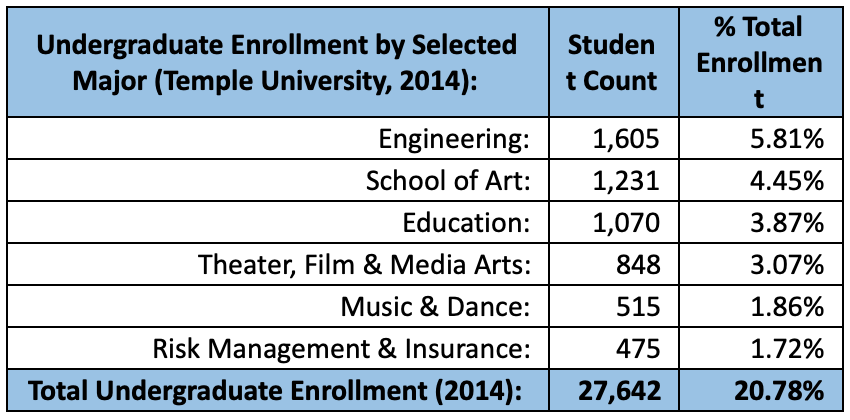 Of the nearly 28,000 undergraduate students attending this university in 2014, less than 2% chose insurance as a potential career; fewer than those pursuing music and dance. If we assume half of the undergraduates studying insurance would be graduating in any given year, this particular program would fill fewer than 1,200 positions over the next five years.
Gamma Iota Sigma, the insurance industry’s lone national professional fraternity, has active local chapters in just 50 of the 3,000 or so higher education institutions in the U.S. offering four-year degree programs. This means insurance is available as a course of study in just one out of every 60 colleges and universities across the country. In 2014, the top 20 schools offering insurance as a major had roughly 3,400 undergraduate students enrolled in those programs collectively. If the Bureau of Labor Statistics’ projections are correct and our industry will have about 200,000 jobs to fill within five years, there won’t be enough insurance graduates to fill the job vacancies left by those who are retiring, let alone the new positions.
To bridge this impending employment gap, our industry will need to look to other non-insurance graduates to fill the void. For some of these individuals, insurance will provide a challenging and rewarding career, but for others it will be an option of last resort. The best and brightest of those pursuing other fields of study will likely have found homes in their chosen career paths. Insurance will get the leftovers. If the insurance industry is to continue to evolve and improve at the same rate as those we insure, something will need to change.
The Lesser of Two Evils
In recent years, a great number of studies have been published on the attitudes, values and work ethics of millennials. A 2011 report issued by PricewaterhouseCoopers (PwC), Millennials at Work; Reshaping the Workplace, indicates personal development opportunities, organization reputation, work/life balance and opportunity to make a difference are some of the key factors millennials consider when choosing a job. Compensation was also a factor but was not among the top three criteria millennials used to make career choices.
The insurance industry would seem to meet most, if not all, of the essential criteria millennials use to judge prospective employers. There is an enormous opportunity for personal development and advancement for young people entering the insurance industry over the next few years. Likewise, many employers in the insurance industry have moved toward flexible working hours and work-from-home arrangements to accommodate a better work/life balance for their employees. Lastly, the insurance industry undoubtedly makes a difference for many people. Insurance allows people to buy homes, operate businesses and recover from life-threatening injuries without fear of possible financial ruin. It even helps people care for their families after they die.
If not for one glaring exception noted in the PwC study, the insurance industry would appear to be a nearly perfect fit for millennials seeking professional employment opportunities. But to quote the great sage Ned Ryerson, that one exception is a DOOOZY. When asked if there were any specific industries millennials would not consider based on reputation alone, insurance ranked second behind only the oil & natural gas industry. Even Ned would have a tough time spinning that one to a prospective millennial. You may hate us, but our carbon footprint is really small... How’s that for a rebuttal and recruiting pitch?
School is Back in Session
The reality for most insurance industry recruiters is that the battle for millennial talent historically was lost before it even began. Not only do we not have an extensive network of colleges and universities providing insurance as a course of study for incoming students but most prospective millennial candidates decided against insurance as a potential career option long before they even chose a college to attend. If the insurance industry is to reverse this trend and attract talented youth, we will need to develop a strategy to engage young people before they begin pursuing a profession.
Traditional career days and fairs at most high schools and colleges generate a relatively high attendance but typically offer little in the way of meaningful interaction with individual students. The likelihood of convincing someone to consider an insurance career in a two or three minute conversation is minimal. A guest lecture lasting 30 minutes (or more) provides much better odds. Many high schools now offer business classes as electives to their students. Some of these schools will occasionally invite guest lecturers from local businesses to speak in their classrooms. A guest lecture that presents an insurance career as a positive and challenging opportunity could be the first introduction to a rewarding career path for some students.
See also: Future of Insurance: Risk Pools of One
Not sure if your local high school offers business classes as part of the curriculum or if they allow guest lecturers into their classrooms? Why not pick up the phone and ask? We call on prospective clients nearly every day asking them to place their business with us. Shouldn’t we put forth the same effort to secure the future of our industry?
Supporting existing college insurance programs will also be a critical component to securing top notch talent in the future. For companies that want to participate in scholarship and grant programs without the administrative responsibilities of operating those programs, there are options available. Organizations like the Spencer Educational Foundation provide scholarships from donor companies and individuals to students pursuing careers in risk management and insurance. These scholarships provide real incentives for talented students to choose insurance as a career. Individuals can likewise help aspiring college graduates by participating in mentorship programs that pair graduating students with experienced professionals. Having a mentor available may make the transition from college to professional life easier and possibly improve the chances of those students remaining in the industry for the long term.
Lastly, while there are only about 50 colleges and universities with established insurance programs nationwide, that leaves about 3,000 opportunities to develop new insurance degree programs. It is likely that at least a handful of the multitude of retiring insurance professionals may simply be looking for a change of scenery rather than a complete departure from the working world. A new career as a college professor could be an option for some. If just one college in every state were to create a small staff of adjunct professors from the pool of retiring insurance professionals, the number of colleges in the United States offering insurance as a degree program would nearly double. This wouldn’t eliminate the talent gap on its own, but as Ned Ryerson would likely agree, it sure as heckfire would be a step in the right direction. Am I right or am I right?
Of the nearly 28,000 undergraduate students attending this university in 2014, less than 2% chose insurance as a potential career; fewer than those pursuing music and dance. If we assume half of the undergraduates studying insurance would be graduating in any given year, this particular program would fill fewer than 1,200 positions over the next five years.
Gamma Iota Sigma, the insurance industry’s lone national professional fraternity, has active local chapters in just 50 of the 3,000 or so higher education institutions in the U.S. offering four-year degree programs. This means insurance is available as a course of study in just one out of every 60 colleges and universities across the country. In 2014, the top 20 schools offering insurance as a major had roughly 3,400 undergraduate students enrolled in those programs collectively. If the Bureau of Labor Statistics’ projections are correct and our industry will have about 200,000 jobs to fill within five years, there won’t be enough insurance graduates to fill the job vacancies left by those who are retiring, let alone the new positions.
To bridge this impending employment gap, our industry will need to look to other non-insurance graduates to fill the void. For some of these individuals, insurance will provide a challenging and rewarding career, but for others it will be an option of last resort. The best and brightest of those pursuing other fields of study will likely have found homes in their chosen career paths. Insurance will get the leftovers. If the insurance industry is to continue to evolve and improve at the same rate as those we insure, something will need to change.
The Lesser of Two Evils
In recent years, a great number of studies have been published on the attitudes, values and work ethics of millennials. A 2011 report issued by PricewaterhouseCoopers (PwC), Millennials at Work; Reshaping the Workplace, indicates personal development opportunities, organization reputation, work/life balance and opportunity to make a difference are some of the key factors millennials consider when choosing a job. Compensation was also a factor but was not among the top three criteria millennials used to make career choices.
The insurance industry would seem to meet most, if not all, of the essential criteria millennials use to judge prospective employers. There is an enormous opportunity for personal development and advancement for young people entering the insurance industry over the next few years. Likewise, many employers in the insurance industry have moved toward flexible working hours and work-from-home arrangements to accommodate a better work/life balance for their employees. Lastly, the insurance industry undoubtedly makes a difference for many people. Insurance allows people to buy homes, operate businesses and recover from life-threatening injuries without fear of possible financial ruin. It even helps people care for their families after they die.
If not for one glaring exception noted in the PwC study, the insurance industry would appear to be a nearly perfect fit for millennials seeking professional employment opportunities. But to quote the great sage Ned Ryerson, that one exception is a DOOOZY. When asked if there were any specific industries millennials would not consider based on reputation alone, insurance ranked second behind only the oil & natural gas industry. Even Ned would have a tough time spinning that one to a prospective millennial. You may hate us, but our carbon footprint is really small... How’s that for a rebuttal and recruiting pitch?
School is Back in Session
The reality for most insurance industry recruiters is that the battle for millennial talent historically was lost before it even began. Not only do we not have an extensive network of colleges and universities providing insurance as a course of study for incoming students but most prospective millennial candidates decided against insurance as a potential career option long before they even chose a college to attend. If the insurance industry is to reverse this trend and attract talented youth, we will need to develop a strategy to engage young people before they begin pursuing a profession.
Traditional career days and fairs at most high schools and colleges generate a relatively high attendance but typically offer little in the way of meaningful interaction with individual students. The likelihood of convincing someone to consider an insurance career in a two or three minute conversation is minimal. A guest lecture lasting 30 minutes (or more) provides much better odds. Many high schools now offer business classes as electives to their students. Some of these schools will occasionally invite guest lecturers from local businesses to speak in their classrooms. A guest lecture that presents an insurance career as a positive and challenging opportunity could be the first introduction to a rewarding career path for some students.
See also: Future of Insurance: Risk Pools of One
Not sure if your local high school offers business classes as part of the curriculum or if they allow guest lecturers into their classrooms? Why not pick up the phone and ask? We call on prospective clients nearly every day asking them to place their business with us. Shouldn’t we put forth the same effort to secure the future of our industry?
Supporting existing college insurance programs will also be a critical component to securing top notch talent in the future. For companies that want to participate in scholarship and grant programs without the administrative responsibilities of operating those programs, there are options available. Organizations like the Spencer Educational Foundation provide scholarships from donor companies and individuals to students pursuing careers in risk management and insurance. These scholarships provide real incentives for talented students to choose insurance as a career. Individuals can likewise help aspiring college graduates by participating in mentorship programs that pair graduating students with experienced professionals. Having a mentor available may make the transition from college to professional life easier and possibly improve the chances of those students remaining in the industry for the long term.
Lastly, while there are only about 50 colleges and universities with established insurance programs nationwide, that leaves about 3,000 opportunities to develop new insurance degree programs. It is likely that at least a handful of the multitude of retiring insurance professionals may simply be looking for a change of scenery rather than a complete departure from the working world. A new career as a college professor could be an option for some. If just one college in every state were to create a small staff of adjunct professors from the pool of retiring insurance professionals, the number of colleges in the United States offering insurance as a degree program would nearly double. This wouldn’t eliminate the talent gap on its own, but as Ned Ryerson would likely agree, it sure as heckfire would be a step in the right direction. Am I right or am I right?


